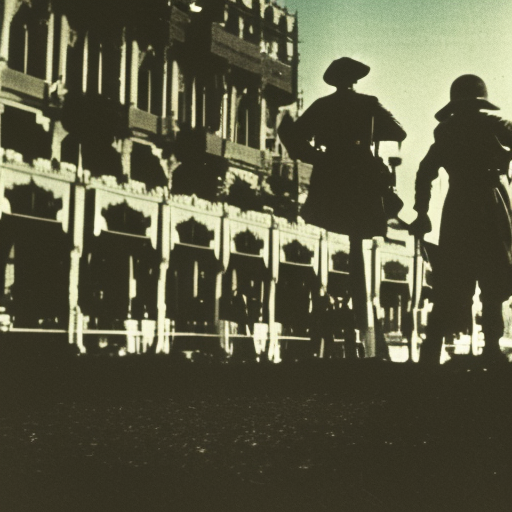Middle Eastern Theatre of World War I
The Middle Eastern Theatre of World War I refers to the series of military campaigns and conflicts that took place in the Middle East during World War I. The main actors in this theatre were the Ottoman Empire, the British Empire, and their respective allies. The war in the Middle East had significant implications for the region, leading to the collapse of the Ottoman Empire and the redrawing of the political map of the Middle East.
Background
At the outbreak of World War I, the Ottoman Empire was a major power in the Middle East. The empire controlled vast territories, including modern-day Turkey, Iraq, Syria, Palestine, and parts of Saudi Arabia and Egypt. The British Empire, on the other hand, had strategic interests in the region, particularly in protecting its access to India and securing the Suez Canal.
The Gallipoli Campaign
One of the first major military campaigns in the Middle Eastern Theatre was the Gallipoli Campaign. In 1915, the British and French launched an amphibious assault on the Gallipoli Peninsula in an attempt to open up a new front against the Ottomans. However, the campaign ended in failure, with heavy casualties on both sides. The Ottoman forces, led by Mustafa Kemal (later known as Ataturk), successfully defended their positions and repelled the invaders.
The Arab Revolt
In 1916, the British began supporting the Arab Revolt, a rebellion against Ottoman rule led by Sherif Hussein of Mecca and his sons. The Arab forces, with the help of British military advisors, launched a guerrilla campaign against the Ottomans in the Arabian Peninsula. The Arab Revolt played a crucial role in tying down Ottoman forces and diverting their attention away from other fronts.
The Sinai and Palestine Campaign
The British Empire launched the Sinai and Palestine Campaign in 1916 with the objective of capturing the Sinai Peninsula from the Ottomans and securing the Suez Canal. The campaign involved a series of battles and sieges, including the Battle of Beersheba, the Battle of Gaza, and the Battle of Megiddo. British forces, led by General Edmund Allenby, achieved significant victories and eventually captured Jerusalem in December 1917.
The Balfour Declaration
During the Sinai and Palestine Campaign, the British government issued the Balfour Declaration in November 1917. The declaration expressed support for the establishment of a “national home for the Jewish people” in Palestine. This declaration had far-reaching consequences for the future of the region and contributed to the ongoing Israeli-Palestinian conflict.
The Collapse of the Ottoman Empire
As the war progressed, the Ottoman Empire faced increasing pressure on multiple fronts. In addition to the campaigns in the Middle East, the Ottomans were also engaged in conflicts in the Balkans and against the Russians in the Caucasus. The empire’s resources were stretched thin, and its military capabilities were severely weakened. In 1918, the Ottomans signed an armistice with the Allies, effectively ending their involvement in World War I.
The Treaty of Sèvres
Following the collapse of the Ottoman Empire, the victorious Allies imposed the Treaty of Sèvres in 1920. The treaty led to the disintegration of the empire and the establishment of new states in the Middle East, including modern-day Turkey, Iraq, Syria, Lebanon, Jordan, and Palestine. The treaty also granted the Allies control over various territories, such as the British Mandate for Palestine and the French Mandate for Syria and Lebanon.
In conclusion, the Middle Eastern Theatre of World War I was a complex and transformative period in the region’s history. The campaigns and conflicts that took place during this time led to the collapse of the Ottoman Empire and the redrawing of the political map of the Middle East. The repercussions of these events continue to shape the region to this day.












